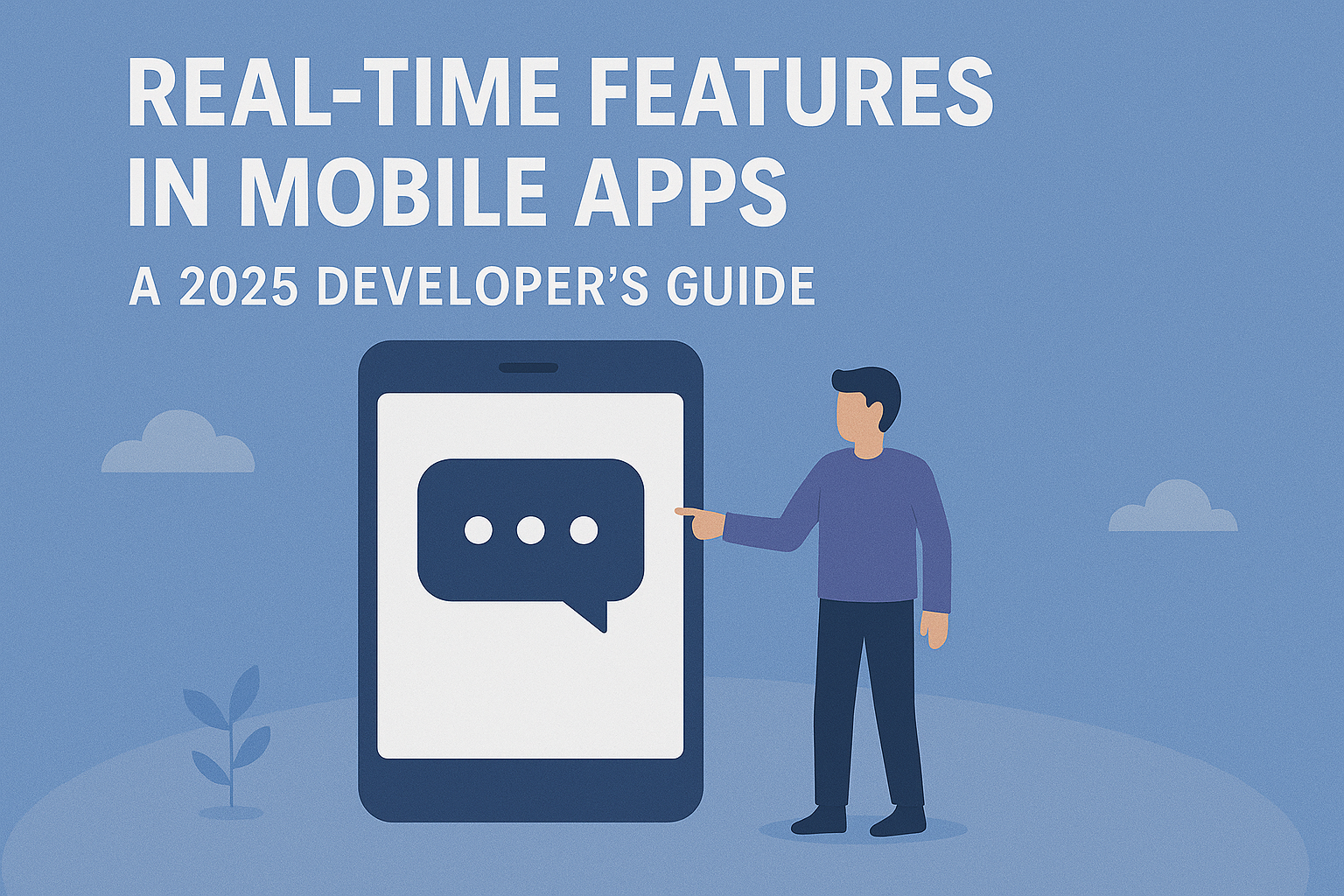Delivering real-time experiences in mobile applications has become a critical expectation in today’s user-centric world. From instant messaging and live dashboards to multiplayer gameplay and real-time tracking, developers are increasingly integrating these capabilities to enhance engagement and responsiveness. This blog dives into the most effective real-time technologies—Firebase, Socket.io, and Azure SignalR—and guides you through practical implementation, tailored to the demands of 2025.
Firebase: Seamless Real-Time Sync Across Platforms
Firebase, a backend-as-a-service platform by Google, empowers developers to quickly deploy real-time features across iOS, Android, and web apps. It supports live syncing with minimal configuration.
Use Case:
Firebase is ideal for collaborative apps, messaging tools, and MVPs that require rapid development.
Example: React Native Firestore Chat Listener
import firestore from '@react-native-firebase/firestore';
useEffect(() => {
const unsubscribe = firestore()
.collection('messages')
.orderBy('timestamp', 'desc')
.onSnapshot(snapshot => {
const messages = snapshot.docs.map(doc => ({ id: doc.id, ...doc.data() }));
setMessages(messages);
});
return () => unsubscribe();
}, []);Firebase automatically handles real-time sync, offline persistence, and scaling for mobile-first applications.
Socket.io: Low-Latency, Customizable Real-Time Logic
For scenarios that demand precise control over real-time data flows, Socket.io offers a lightweight, flexible solution built on WebSockets.
Use Case:
Socket.io is perfect for custom real-time workflows such as games, live auctions, or collaborative whiteboards.
Example: Node.js Broadcast Server
const io = require('socket.io')(3000, {
cors: { origin: '*' }
});
io.on('connection', (socket) => {
console.log('User connected:', socket.id);
socket.on('message', (data) => {
socket.broadcast.emit('message', data);
});
});Socket.io provides resilience over fluctuating network conditions and can be tuned for latency-sensitive use cases.
Azure SignalR: Enterprise-Grade Real-Time Infrastructure
For teams operating in enterprise Azure environments, Azure SignalR offers scalable, cloud-native real-time messaging that integrates seamlessly with .NET, Azure Functions, and App Services.
Use Case:
Azure SignalR is optimal for internal dashboards, B2B solutions, and applications already leveraging Azure’s cloud services.
Example: Azure Function Broadcasting with SignalR (C#)
[FunctionName("SendMessage")]
public static async Task<IActionResult> Run(
[HttpTrigger(AuthorizationLevel.Function, "post")] HttpRequest req,
[SignalR(HubName = "chat")] IAsyncCollector<SignalRMessage> signalRMessages)
{
string user = req.Query["user"];
string message = await new StreamReader(req.Body).ReadToEndAsync();
await signalRMessages.AddAsync(
new SignalRMessage
{
Target = "newMessage",
Arguments = new[] { user, message }
});
return new OkResult();
}With automatic scaling and built-in security, Azure SignalR meets the needs of high-availability real-time systems.
Decision Guide: Choosing the Right Stack
| Scenario | Go-To Solution |
| Social messaging or collaboration | Firebase |
| Multiplayer games or IoT apps | Socket.io |
| Corporate dashboards & monitoring | Azure SignalR |
Pro Tip: Blend technologies when appropriate—Firebase for chat and Socket.io for fast-paced game logic.
Common Pitfalls to Avoid
- Overusing polling instead of WebSockets: Polling adds unnecessary load and latency.
- Skipping auth on open sockets: Always authenticate WebSocket connections to prevent hijacking.
- Ignoring network edge cases: Account for reconnects, packet loss, and offline fallback logic.
- Neglecting scalability: Choose solutions that can grow as your user base expands.
Conclusion
Real-time features are no longer optional in mobile app development—they’re a baseline requirement for compelling, competitive apps. Whether you’re launching a new MVP or upgrading enterprise systems, Firebase, Socket.io, and Azure SignalR offer powerful options tailored to your app’s unique needs.
Looking to integrate one of these solutions into your app? I can help you get started with boilerplates, deployment templates, or scaling strategies—just ask!


